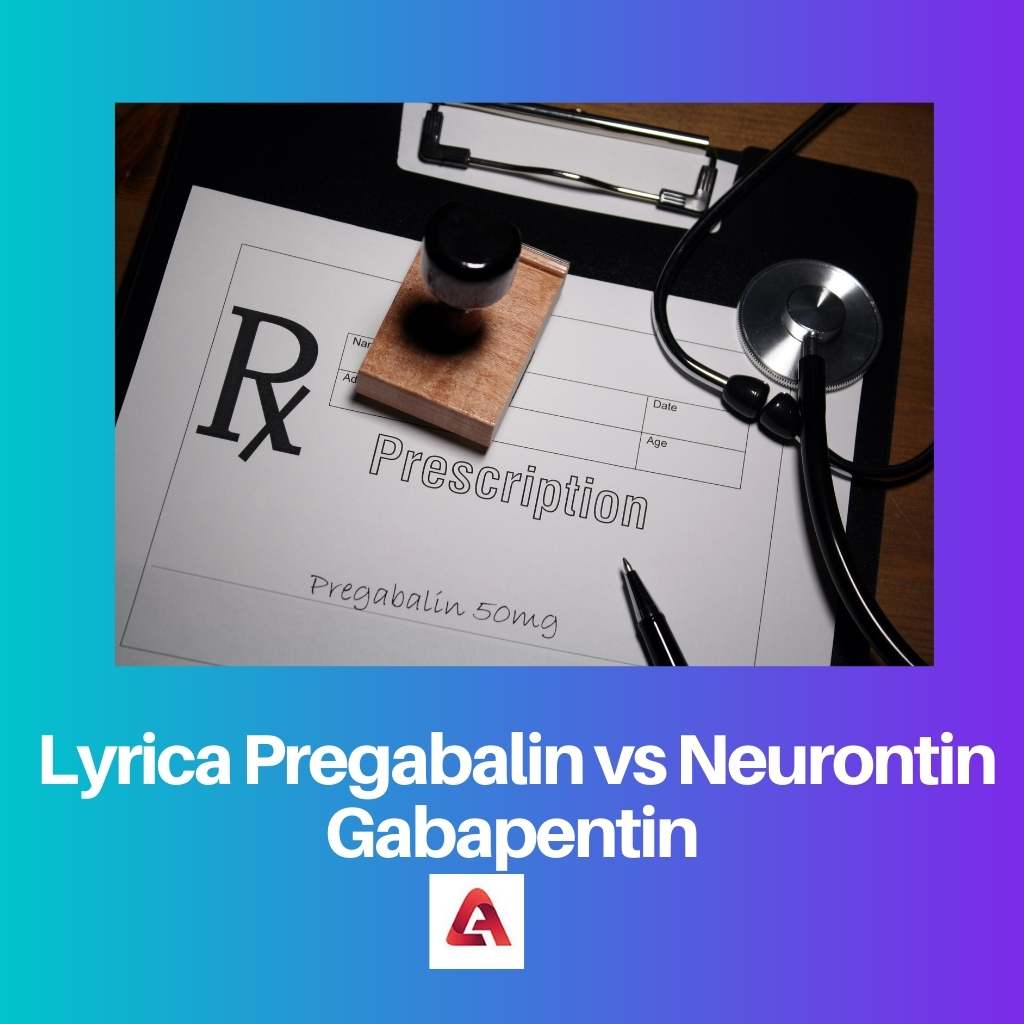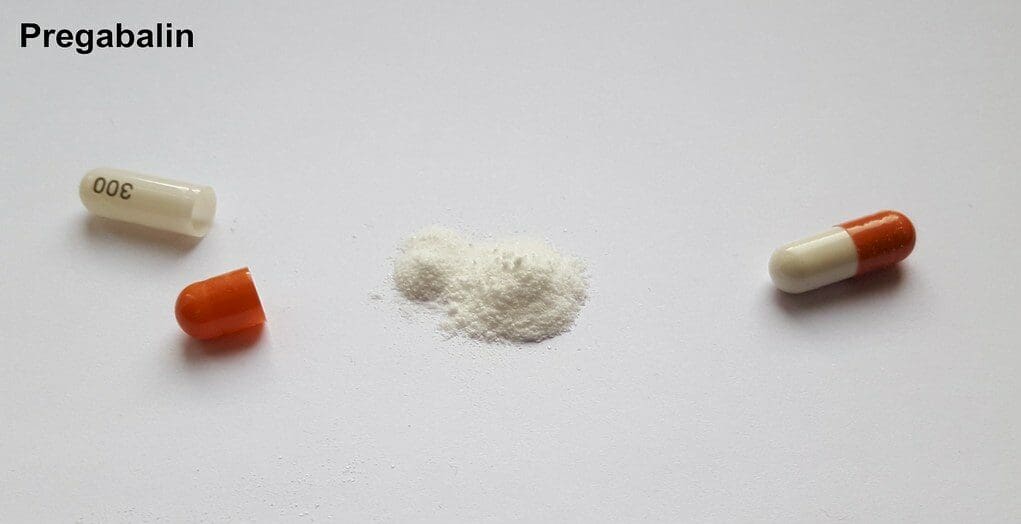Lyrica pregabalin and Neurontin gabapentin are drugs designed to control and alleviate neuropathic pain and partial-onset convulsions.
Although these drugs alleviate pain, Lyrica Pregabalin and Neurontin gabapentin remain classified as anticonvulsants.
Their intermolecular interactions are remarkably similar to those of gamma-aminobutyric acid, abbreviated GABA. Given their commonalities, they still differ in composition and medication interactions.
Key Takeaways
- Lyrica and Neurontin are anticonvulsant medications for nerve pain, epilepsy, and fibromyalgia.
- Both drugs work by inhibiting the release of specific neurotransmitters to reduce pain signals in the nervous system.
- Although they have similar uses, Lyrica is more potent and may require lower doses for effective treatment.
Lyrica Pregabalin vs Neurontin Gabapentin
Pregabalin (Lyrica) works by binding to a specific type of calcium channel in the brain and nervous system, reducing the release of neurotransmitters in pain signalling. Gabapentin (Neurontin) works by binding to a specific type of calcium channel, calming the brain.

Lyrica pregabalin is marketed under the brand name Pregabalin. Lyrica is used to relieve postherpetic neuralgia and partial-onset seizures but also to heal diabetic peripheral neuropathy and fibromyalgia.
Lyrica is a prescription medication for persons aged 18 and up. Lyrica is not known to be safe or effective in youngsters.
Neurontin Gabapentin is commonly prescribed as gabapentin. Neurontin is used to control seizures in children and adults over the age of three.
Neurontin is used to alleviate neuropathic pain (nerve pain) produced by the herpes virus or shingles in adults (herpes zoster). Optimum concentrations in the bloodstream occur about 3 hours after ingestion.
Comparison Table
| Parameters of Comparison | Lyrica Pregabalin | Neurontin Gabapentin |
|---|---|---|
| Time for Absorption | Within an hour. | Within 3 to 4 hours. |
| Potency | Higher | Lower |
| Dosage | Once or twice per day | Three-time or more |
| Strength of Capsules | 25, 50, 75, 100, 150, 200, 225, and 300 mg. | 100 mg, 300 mg, 400 mg. |
| Drug Interactions | No significant drug interactions were found. | Drug interactions with morphine, Maalox, and Hydrocodone. |
| Average Price | More expensive | Less expensive |
| Indication | Neuropathic pain and Fibromyalgia | Neuropathic pain, restless leg syndrome, and complex regional pain syndrome. |
What is Lyrica Pregabalin?
Lyrica Pregabalin is a pain reliever that is being used to alleviate partial-onset seizures in adults 30 days of age or older to treat partial-onset seizures when combined with other seizure medications.
Lyrica has not yet been verified to be a secure and reliable medicine among kids under the age of one month.
Lyrica has more than 90% bioavailability and is available as oral capsules in the following strengths: 25 mg, 50 mg, 75 mg, 100 mg, 150 mg, 200 mg, 225 mg, and 300 mg. It’s also available in a 20 mg/mL oral solution.
Lyrica is much more likely to provoke adverse symptoms, including dry mouth, constipation, swelling (edoema), breast enlargement, or excess weight gain.
Increased hunger, flu-like symptoms, gas and bloating, back pain, headache, constipation, wheezing, chest discomfort, memory issues, rash, and other adverse effects are possible.
Together with its advantages, this medicine may, on rare occasions, result in inappropriate drug-seeking behaviour (addiction). Whether you have previously misused alcohol or drugs, one’s risk may be elevated.
To reduce the danger of addiction, one should take this medicine precisely as directed. Lyrica Pregabalin withdrawal symptoms include nausea, sweating, anxiety, sleep difficulties, diarrhoea, and headaches.
Lyrica Pregabalin has also been authorized to cure epilepsy and post-herpetic neuropathy. It can also cure neuropathy (nerve) pain due to diabetes (diabetic peripheral neuropathy) as well as fibromyalgia pain.

What is Neurontin Gabapentin?
Gabapentin is an anti-seizure (anti-convulsant) prescription drug used to treat seizures and alleviate post-herpetic neuralgia, pain after shingles. It also has a lower bioavailability than Lyrica.
As a result, dosage may become more varied in terms of providing the intended effect. Drug interactions, on the other hand, are not an issue owing to renal clearance.
Gabapentin capsules and tablets are available in strengths of 100 mg, 300 mg, and 400 mg. A 250 mg/5 mL oral solution is also available.
Gabapentin’s chemical formula is C9H17NO2, and its molecular weight is 171.24.
Gabapentin is much more likely to produce adverse effects such as trouble speaking, fever, an elevated risk of viral infections, odd eye tracking, or jerky movements than Lyrica.
It is neither an opioid drug nor is it a prohibited substance, according to the Drug Enforcement Administration (DEA)
Unfortunately, this medicine exhibits signs and symptoms similar to those linked with drug abuse, addiction, and opioid withdrawal symptoms. Insomnia, dizziness, sleepiness,
exhaustion, lack of control over muscular movements, vomiting, and other withdrawal symptoms of Neurontin Gabapentin are common.
Gabapentin may cause dizziness, drowsiness, tremors, headache, ear discomfort, impaired coordination, blurred vision, weight gain, increased appetite, shortness of breath,
rash, seizures, memory issues, dry mouth, and other adverse effects.
Combining Neurontin with other medicines that produce drowsiness or sluggish breathing might result in serious adverse effects or death.

Main Differences Between Lyrica Pregabalin And Neurontin Gabapentin
- Lyrica Pregabalin gets absorbed within an hour, whereas Neurontin Gabapentin takes at least 3 to 4 hours.
- Lyrica Pregabalin has a greater potency than that of Neurontin Gabapentin, which has a lower potency.
- Lyrica Pregabalin is prescribed once or twice per day, whereas Neurontin Gabapentin is prescribed three times or more per day.
- Lyrica Pregabalin capsules range in strength from 25 mg to 50 mg, 75 mg to 100 mg, 150 mg to 200 mg, and 225 mg to 300 mg, whereas Neurontin Gabapentin capsules are available in 100, 300, and 400 mg.
- In terms of drug interactions, Lyrica Pregabalin has no significant interactions, however, Neurontin Gabapentin has drug interactions with morphine, Maalox, and hydrocodone.
- Lyrica Pregabalin is more costly, whilst Neurontin Gabapentin is less expensive.
- Lyrica Pregabalin is recommended for Neuropathic pain and Fibromyalgia, whereas Neurontin Gabapentin is recommended for Neuropathic pain, restless leg syndrome, and complex regional pain syndrome.

- https://onlinelibrary.wiley.com/doi/abs/10.1111/j.1742-7843.2010.00590.x
- https://link.springer.com/article/10.1007/s00228-008-0523-5

The comprehensive comparison table clearly illustrates the differences between these two drugs. Patients and healthcare practitioners should consider this information when deciding on a treatment plan.
Absolutely, a well-informed decision is crucial when it comes to medication choices.
Although they have adverse effects, they can also provide great relief from certain types of pain. People seeking treatment should be aware of the risks and benefits and make an informed decision.
This is very informative. We can identify the advantages and disadvantages of these drugs and use the most convenient treatment for each situation.
I feel that although these drugs are effective, they should be used with caution considering the reported side effects and potential for abuse.
These drugs might work well depending on the user’s needs, as they have different reactions and purposes. They should be used carefully and under supervision from a specialist.
It’s amazing that we have these options to treat neuropathic pain and seizures, however, the potential side effects should not be overlooked.
I agree, some of the reported side effects sound concerning.